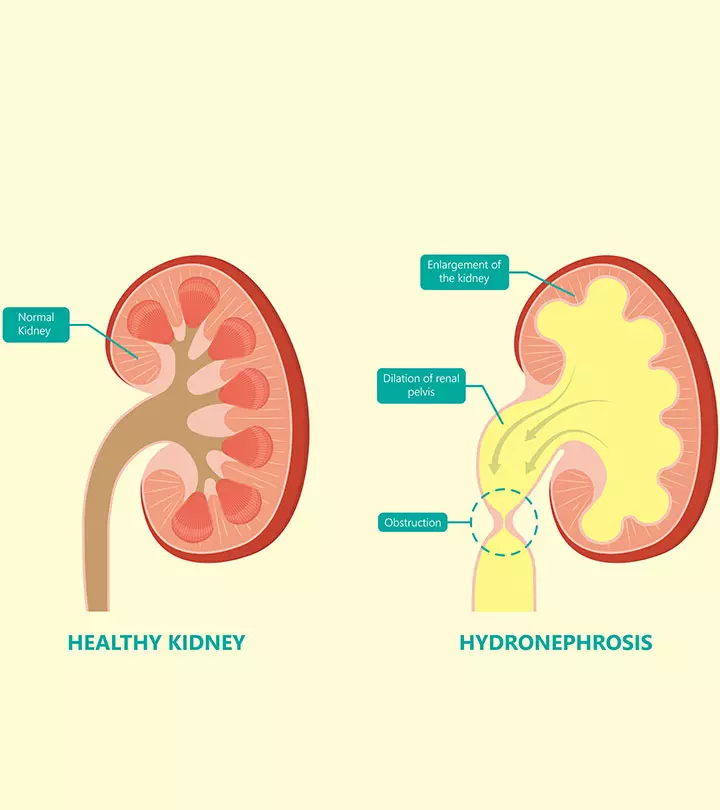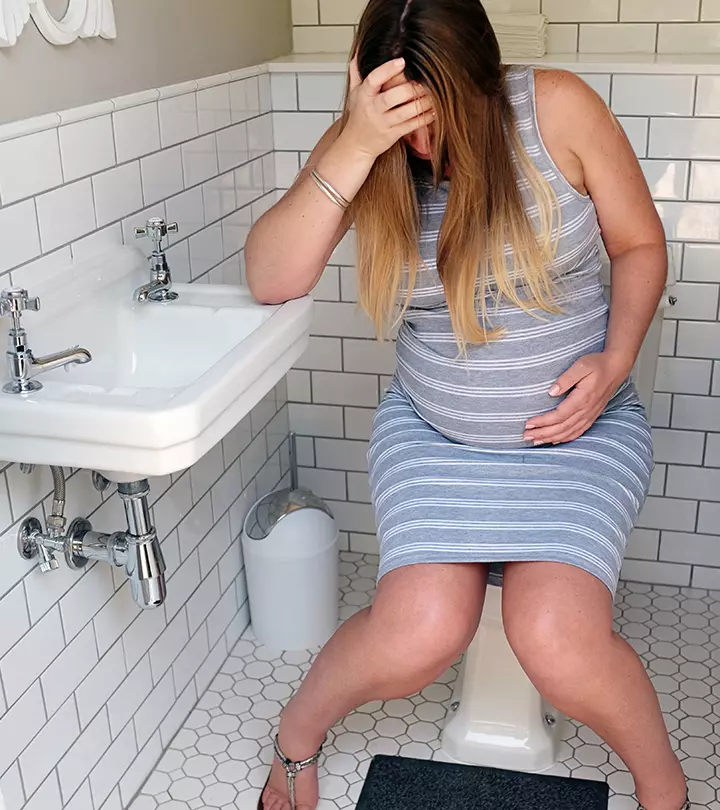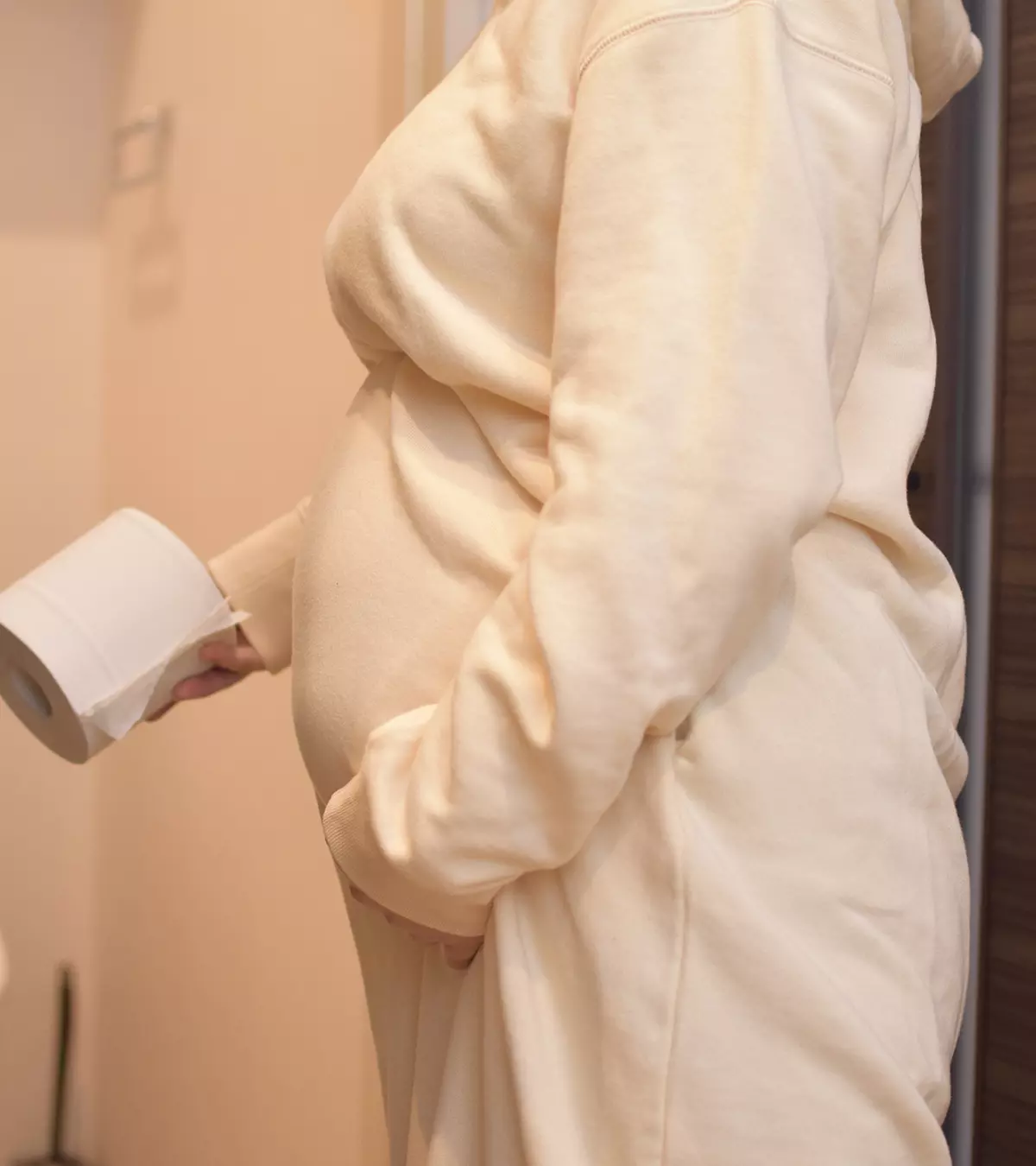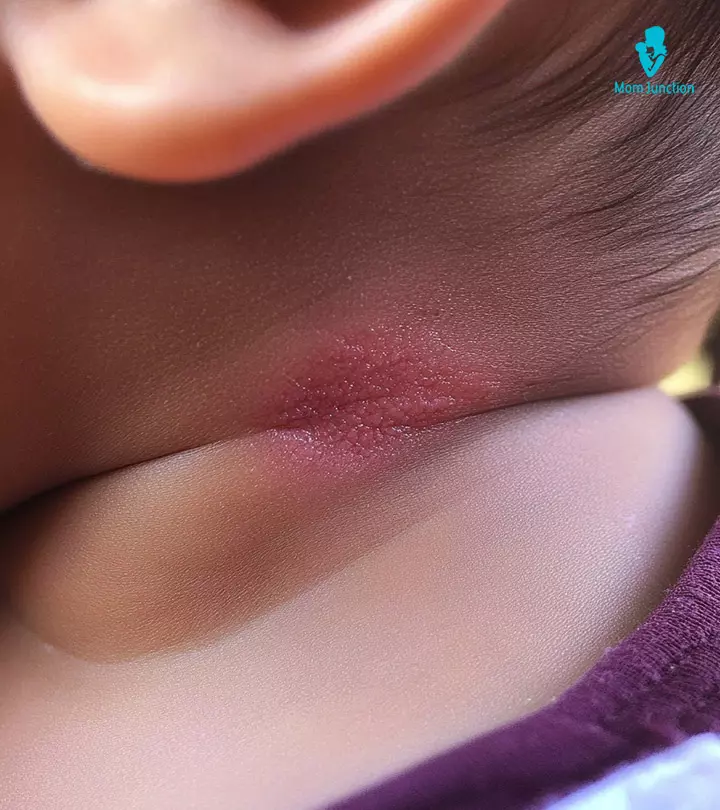
Image: Shutterstock
Babinski reflex in babies is one of the newborn reflexes present at birth.
Primitive reflexes occur automatically as a response to stimuli. The presence of these reflexes is a crucial indicator of the health of the baby’s central nervous system (1). A doctor may check for newborn reflexes, including the Babinski reflex, at birth and subsequent checkups. Parents may also be able to test the presence of the Babinski reflex at home.
Babinski reflex serves as a key indicator of neurological health in infants. Thus, it is crucial to recognize its normal presence to ensure your child has no developmental issues. Read this post and learn more about the Babinski reflex, its timeline, and when it can be a sign of worry.
Key Pointers
- When you notice your baby’s big toe moving as you stroke the base of the heel, it could be a Babinski reflex.
- It is important to test the Babinski reflex in babies to ensure the proper functioning of the central nervous system.
- Babinski reflex in babies tends to last for up to two years of age.
What Is The Babinski Reflex?
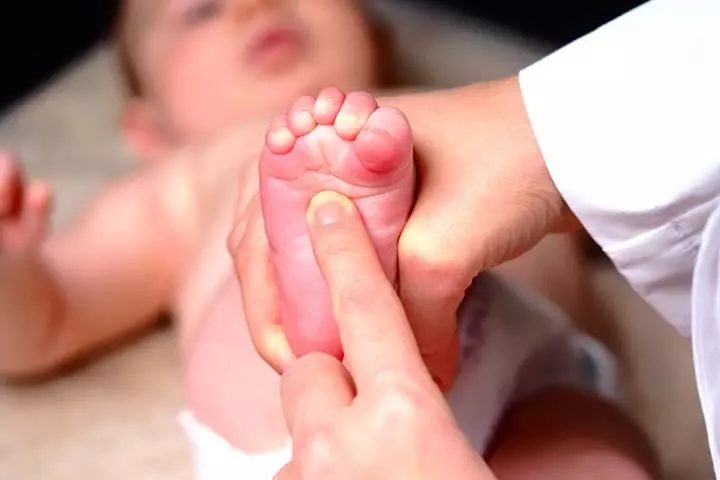
Image: Shutterstock
Babinski reflex was first identified in the late 19th century by the French neurologist Joseph Babinski (2). It is also called the Babinski sign or Babinski response. The academic name for the reflex is plantar reflex.
This sensory reflex occurs when the sole of the baby’s feet is gently stroked from the heel to the base of the great toe along the lateral or outer side of the foot. The big toe moves upward while the remaining toes fan or flare out in response to the stimulation. Babinski reflex is present at birth and lasts up to 24 months.
Signs Of Healthy Babinski Reflex
You may test for the presence of the Babinski reflex at home by holding the newborn’s feet and gently stroking the sole from the heel to the base of the great toe with your finger. You will notice the big toe moving upward or in the proximal direction while the remaining toes flare out. Avoid using any sharp objects to elicit the reflex, and use the tip of your finger instead of your fingernail.
When Does Babinski Reflex Disappear?
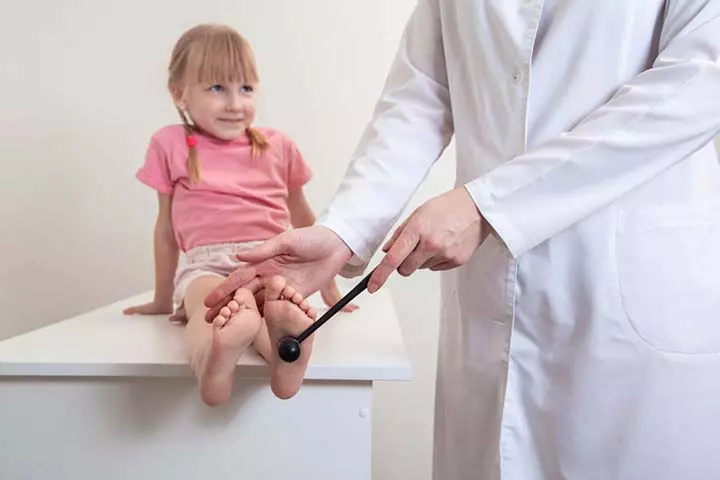
Image: Shutterstock
The Babinski reflex may last up to the age of two years or 24 months in most babies. The reflex may fade away by 12 months in some babies (3). Presence of the Babinski reflex after the age of two years and in adults indicates the presence of brain or spinal cord injury and needs to be assessed.
Why Test For Babinski Reflex In Infants?
The presence of the Babinski reflex in newborns is crucial to determine the proper functioning of the central nervous system. Babinski reflex specifically indicates the normal function of the corticospinal tract, a motor neuron pathway from the brain’s cerebral cortex to the spinal cord (2). This motor neuron pathway plays an essential role in controlling the movement of lower limbs and parts of the torso.
The absence of the Babinski reflex or an abnormal sign in infants may indicate problems with the corticospinal tract, indicating possible issues with the central nervous system or possible neurological disorders.
When Is Babinski Reflex Abnormal?
The Babinski reflex is considered abnormal when it persists beyond the age of two years. The reflex is usually considered a pathological sign in children older than two years and adults.
What Causes Abnormal Babinski Reflex?
The presence of Babinski sign in children older than two years indicates the lack of integration in the corticospinal tract. A well-integrated corticospinal tract contains developed cells that subdue the reflex in older children and adults. Therefore, the persistence of the Babinski sign may indicate damaged nerve cells in the pathway.
The following conditions may damage the nerve cells in the corticospinal tract, causing abnormal Babinski reflex in children older than two years (3).
- Central nervous system (CNS) infections, such as meningitis
- Brain or spinal cord tumor
- Defects in CNS, including defects in the brain or spinal cord
- Amyotrophic lateral sclerosis (ALS) or Lou Gehrig’s disease
- Multiple sclerosis
- Brain or spinal cord injury
In rare cases, abnormal Babinski reflex may occur in babies due to stroke, which may be a result of other congenital or genetic defects, such as sickle cell disease (4).
When To Be Concerned

Image: Shutterstock
If your baby displays a Babinski reflex beyond the age of two years, speak to a pediatrician. Additionally, observe for other concerning signs such as delayed motor skills or lack of response to stimuli, which may indicate the need for further evaluation. If your baby has no other sign of developmental delay, it may be a normal delay in the integration of reflexes. Your healthcare professional may ask you to wait for a few additional weeks. If the reflex persists or the baby has other signs of neurological dysfunction, your doctor may recommend relevant tests and a medical examination to carry out a neurological assessment and diagnose the possible underlying cause.
Frequently Asked Questions
1. How common is it for a baby to have an abnormal Babinski reflex?
Research done on primitive reflexes in babies indicates that about thirty-three percent of newborns born in a high-risk pregnancy have an abnormal Babinski reflex, with lesser instances among children with older gestational age. However, it is not known if these findings can be extrapolated to larger populations (5).
2. Can the Babinski reflex predict future cognitive and motor development in infants?
Studies indicate that the long-term presence or absence of primitive reflexes such as Babinski in a newborn are predictors of the child’s school-age neuromotor and cognitive functioning. Notably, the natural tapering away of these primitive reflexes has been linked to improved cognitive function and academic skills acquisition (6) (7).
3. Is the Babinski reflex painful for babies?
Babinski is a normal involuntary reflex in babies and is generally not painful unless triggered by instruments that cause pain (8).
4. How can parents help their baby develop proper reflexes, including the Babinski reflex?
Parents may help the development of reflexes by engaging with the baby through sensory play such as feathers, sand, water, music, or other age-appropriate reflex-promoting activities. This can be done with the guidance of a nurse or a pediatrician.
5. What is the difference between plantar grasp and Babinski?
Babinsky is a primitive reflex in which the baby’s toes fan out upon being stroked on the bottom of their feet from the heels to the toes. The plantar grasp is a secondary reflex that appears after Babinski disappears. It occurs when the baby curls their toes around an object or finger when it is placed just under its toes (9).
Babinski reflex in babies is a common indicator of proper neurological development. Doctors evaluate the reflex at birth and also during regular checkups. Parents can also check this reflex at home as guided by the doctor. Generally, the reflex abates by two years of age. However, if it persists, medical assessment is necessary. Several conditions, such as central nervous system infection and congenital neurological abnormalities, may cause the reflex to persist. Timely diagnosis of the precise cause is preeminent to initiate prompt treatment and prevent chronic complications.
Infographic: Reasons For Abnormal Babinski Reflex In Children
The Babinski reflex is one of the primitive reflexes present in newborns from birth. But if your child shows the signs of this reflex beyond two years, it is considered abnormal. The following infographic outlines various causes for sustained Babinski reflex.
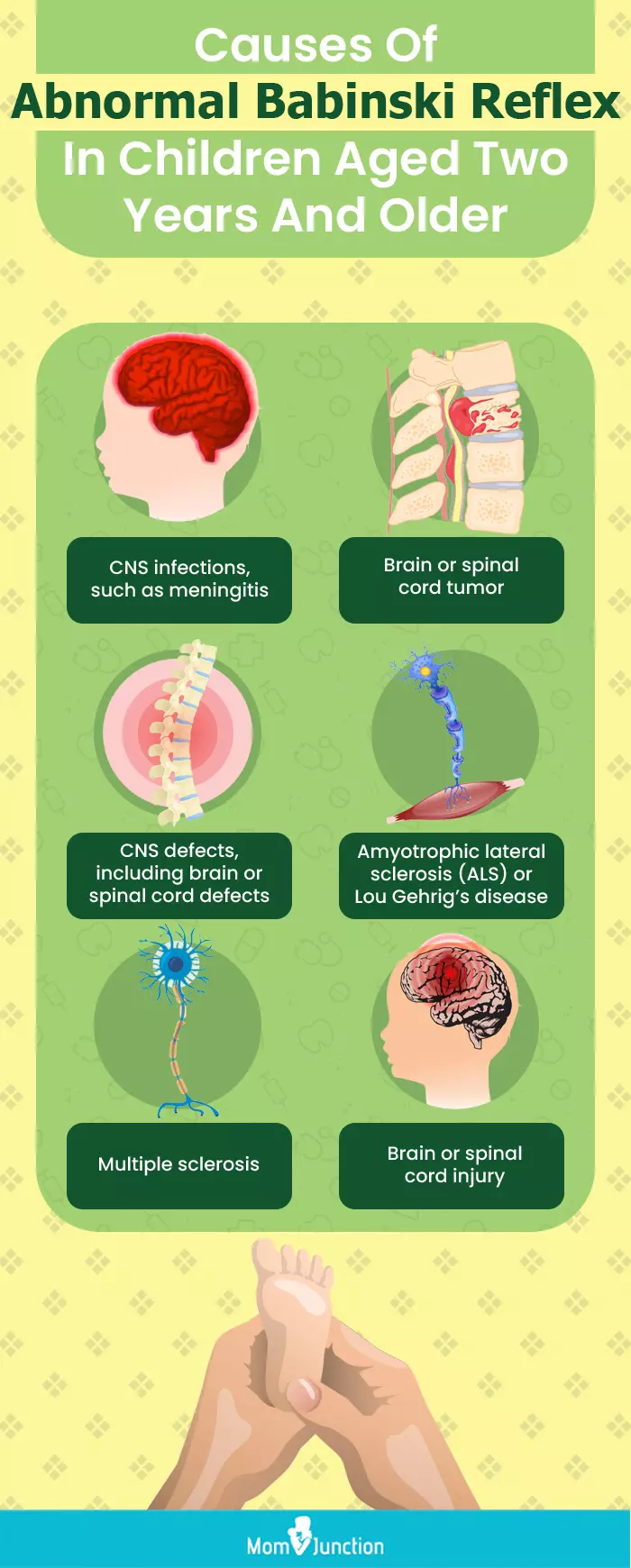
Illustration: Momjunction Design Team
Illustration: Babinski Reflex In Babies: What Is It & When to Be Concerned?
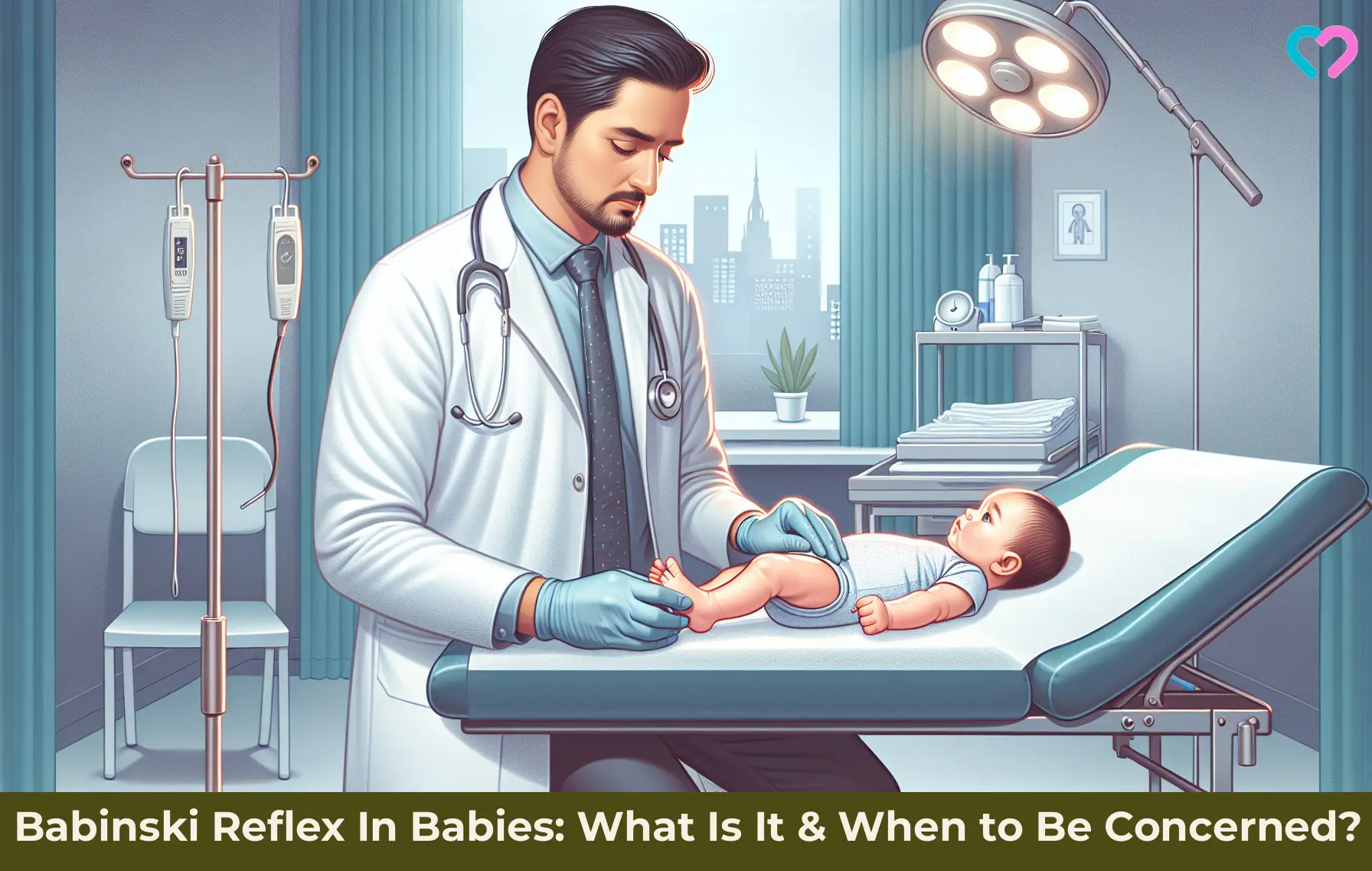
Image: Stable Diffusion/MomJunction Design Team
Watch as this video shows you how you can test the presence of Babinski reflex in your baby and understand the results of it.
References
1. Infant reflexes; U.S. National Library of Medicine
2. Aninda B. Acharya; Radia T. Jamil, and Jeffrey J. Dewey, Babinski Reflex; U.S. National Library of Medicine
3. Babinski reflex; U.S. National Library of Medicine
4. Pediatric Stroke; Children’s Hospital of Pittsburgh
5. Assessment of Primitive Reflexes in High-risk Newborns; National Center For Biotechnology Information
6. Primitive Reflex Activity in Relation to Motor Skills in Healthy Preschool Children; National Center For Biotechnology Information
7. Persistent Childhood Primitive Reflex Reduction Effects on Cognitive, Sensorimotor, and Academic Performance in ADHD; Frontiers
8. Babinski Reflex; National Center For Biotechnology Information
9. Newborn Reflexes; Cleveland Clinic
Community Experiences
Join the conversation and become a part of our nurturing community! Share your stories, experiences, and insights to connect with fellow parents.
Read full bio of Dr. Neema Shrestha
Read full bio of Dr Bisny T. Joseph
Read full bio of Rohit Garoo
Read full bio of Shinta Liz Sunny















